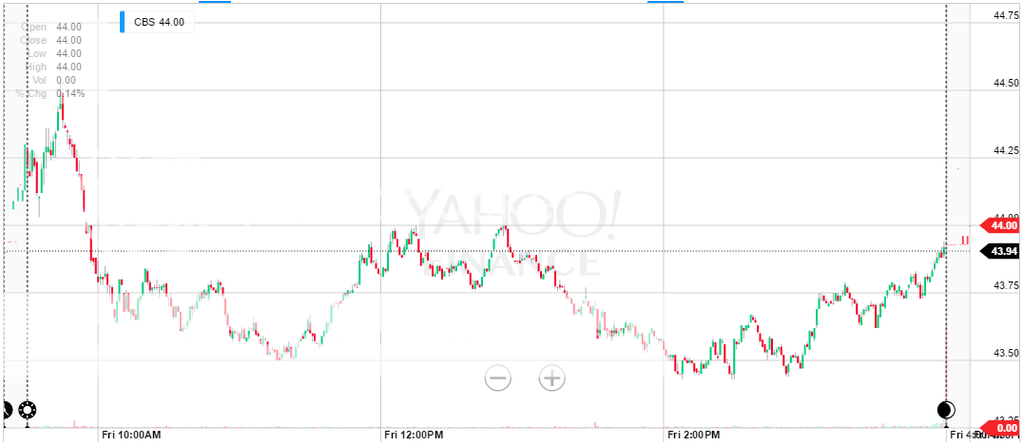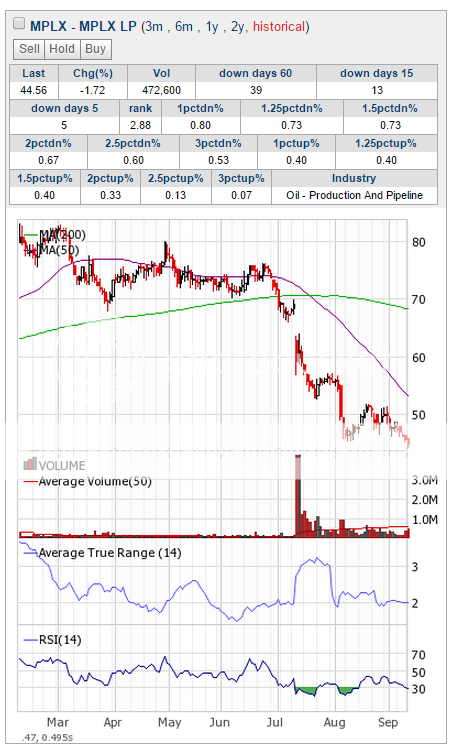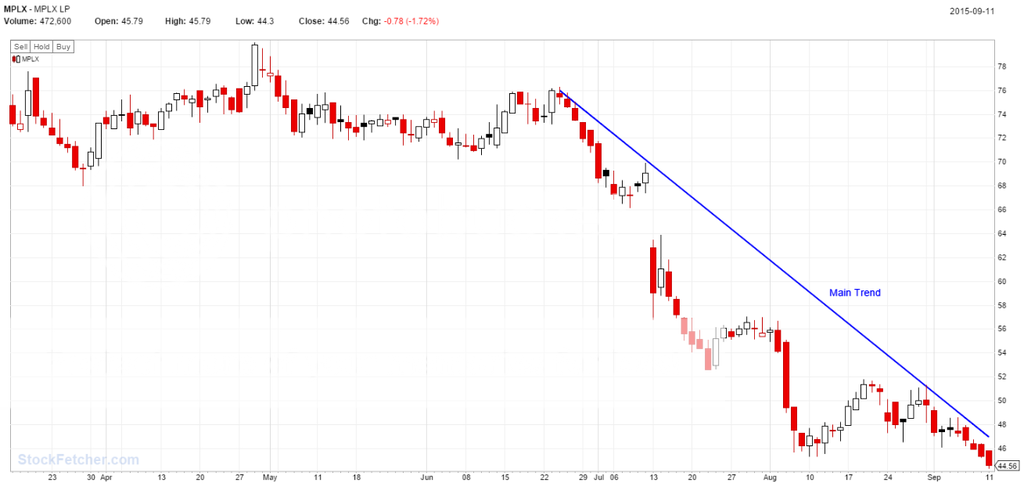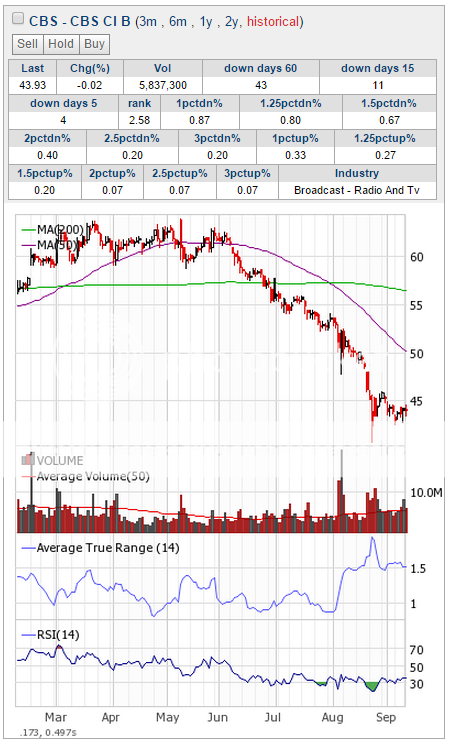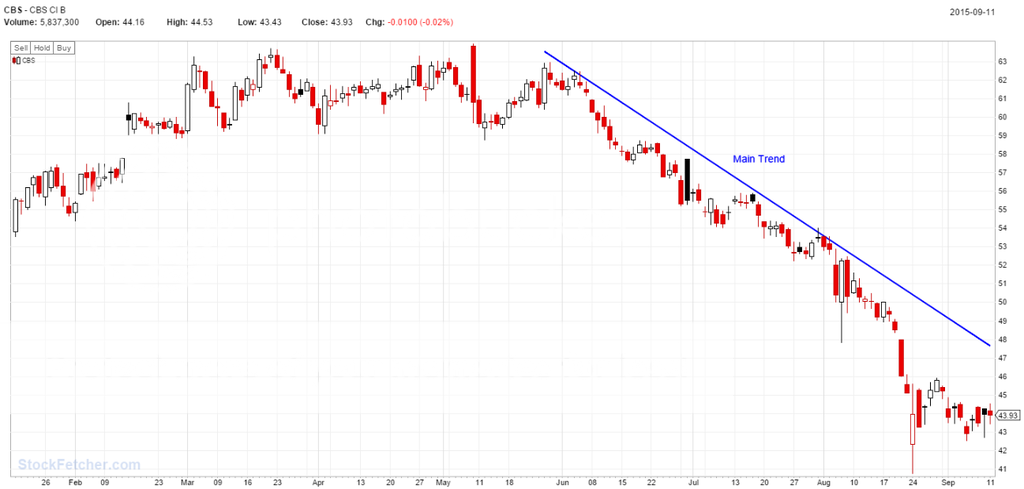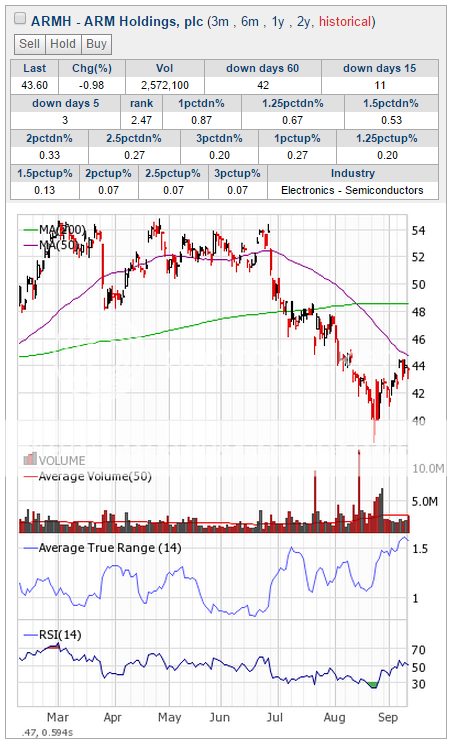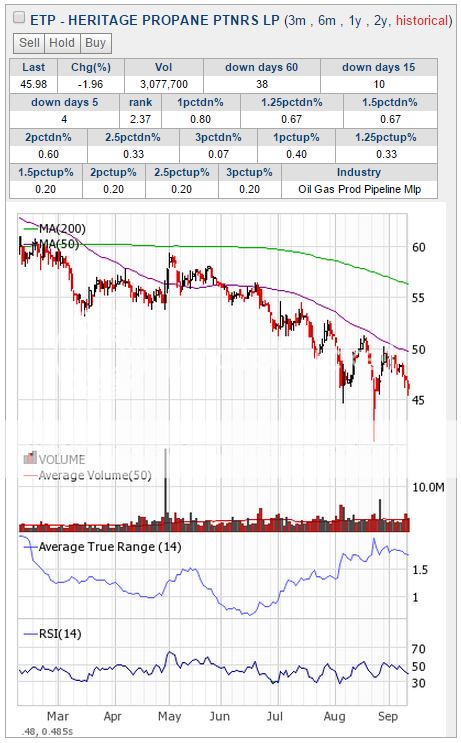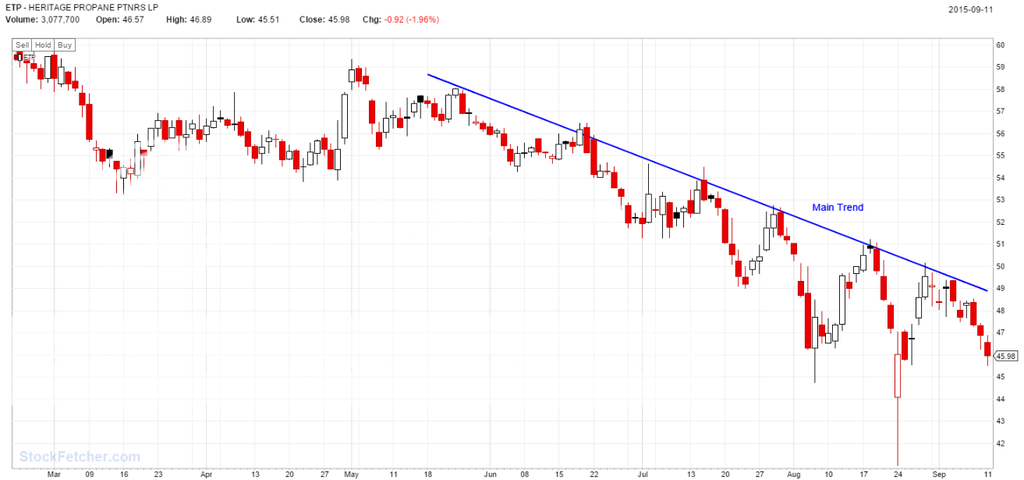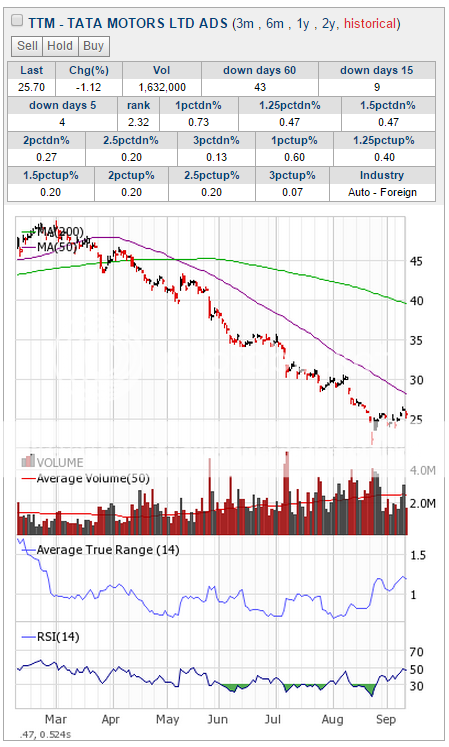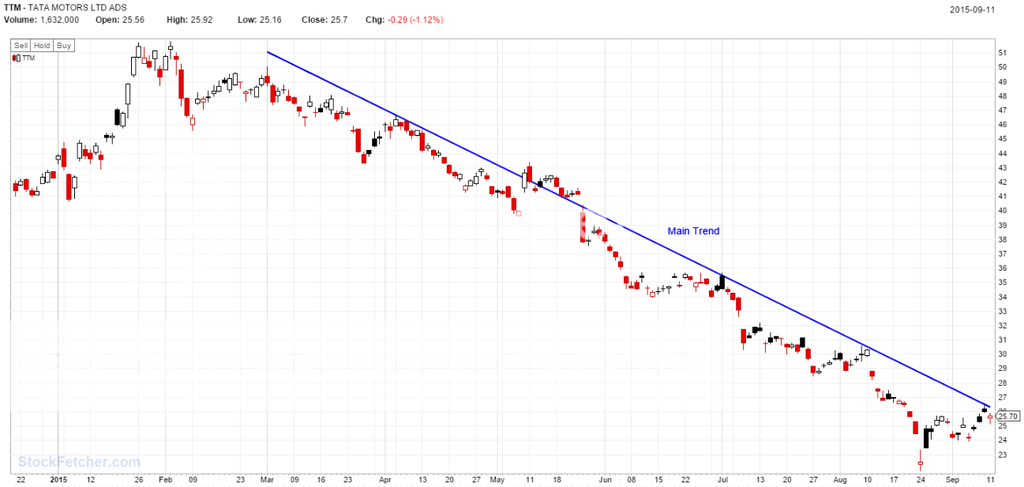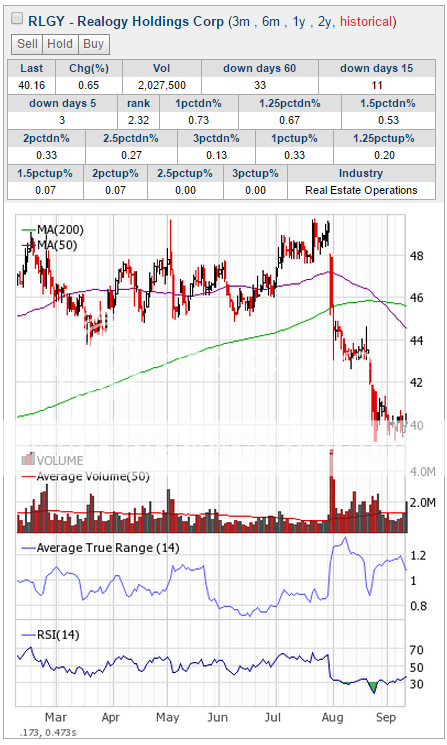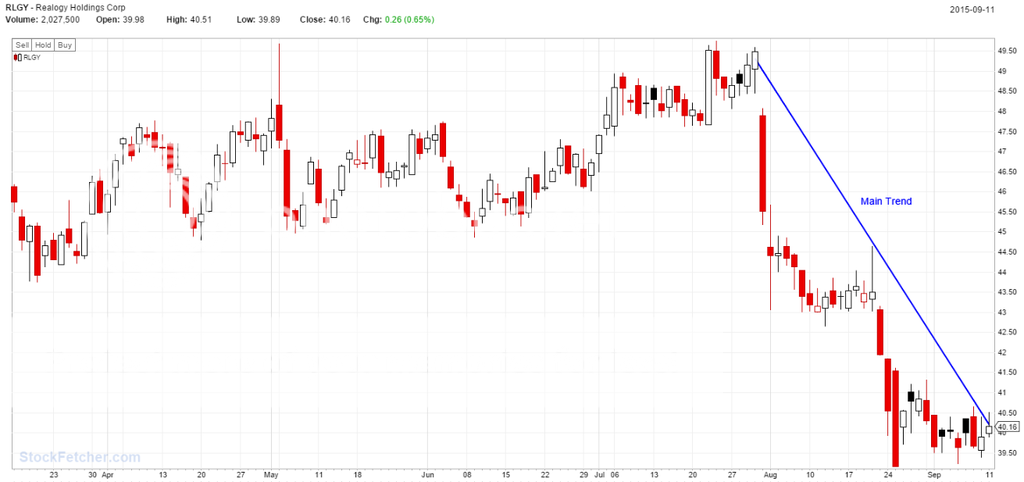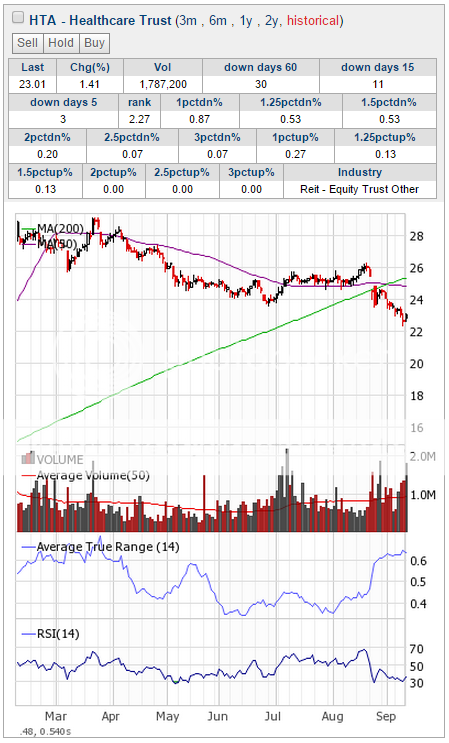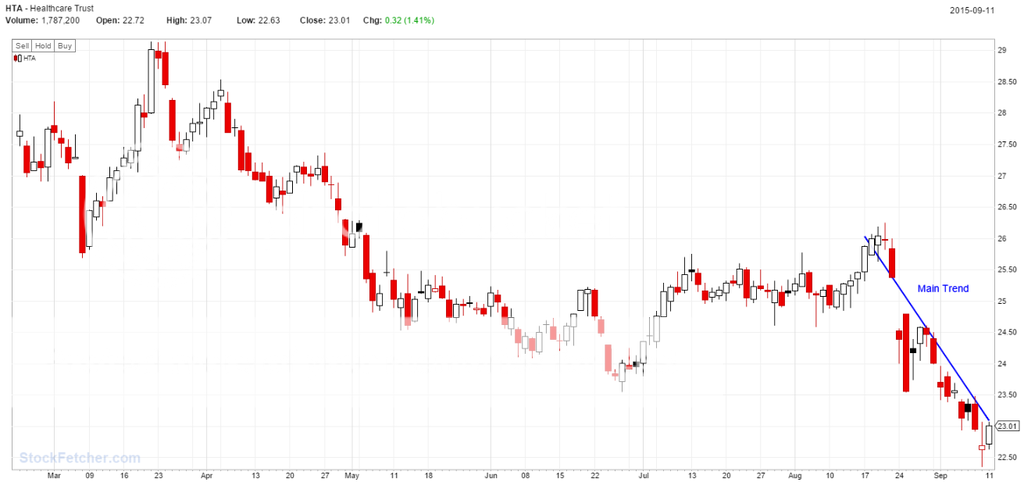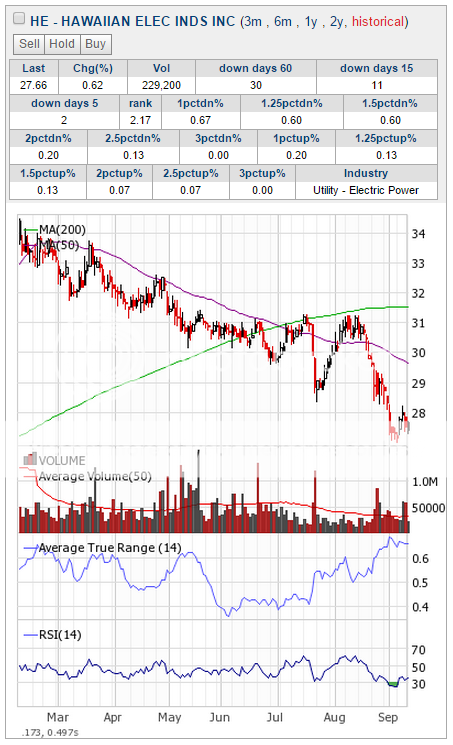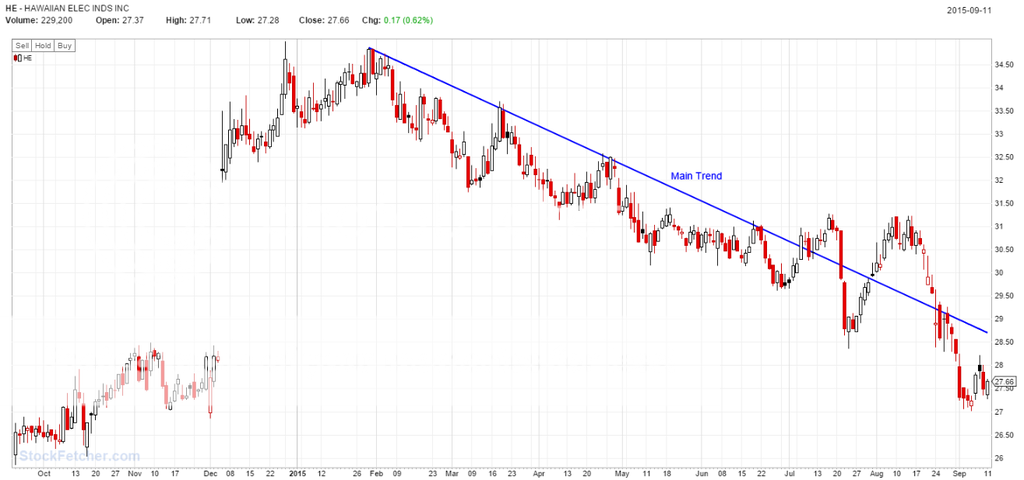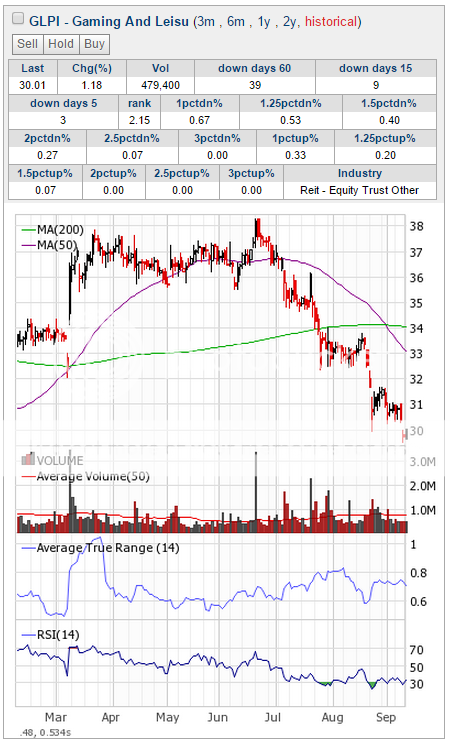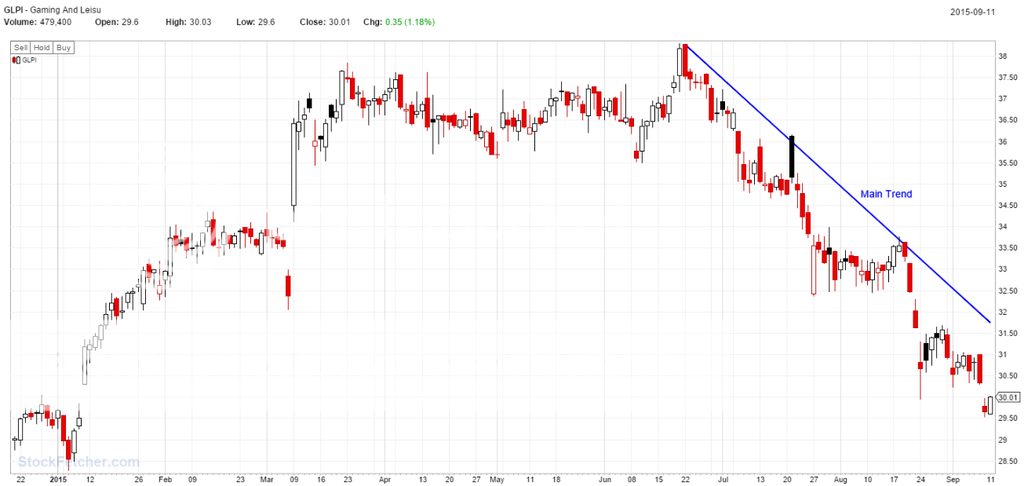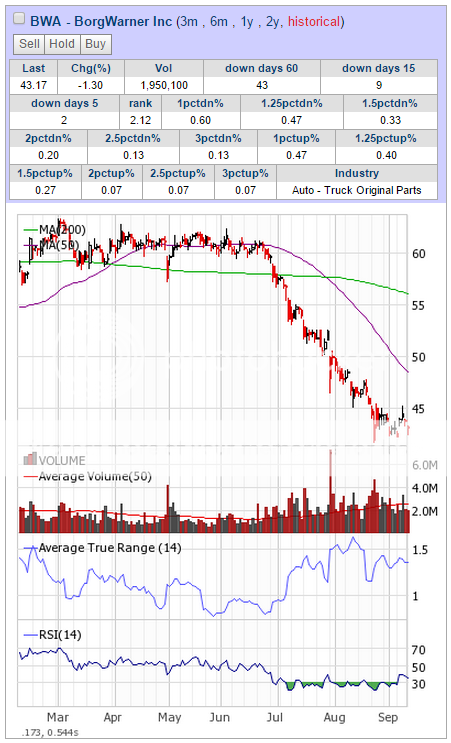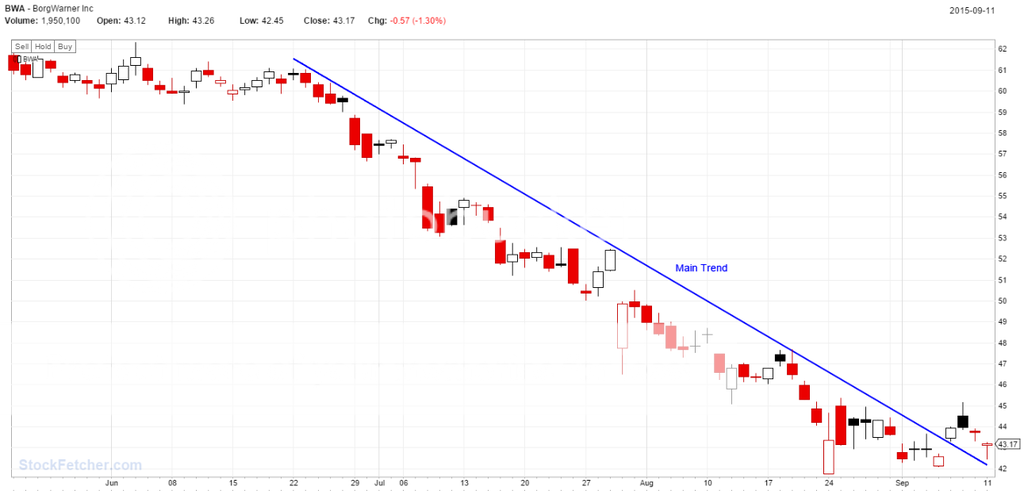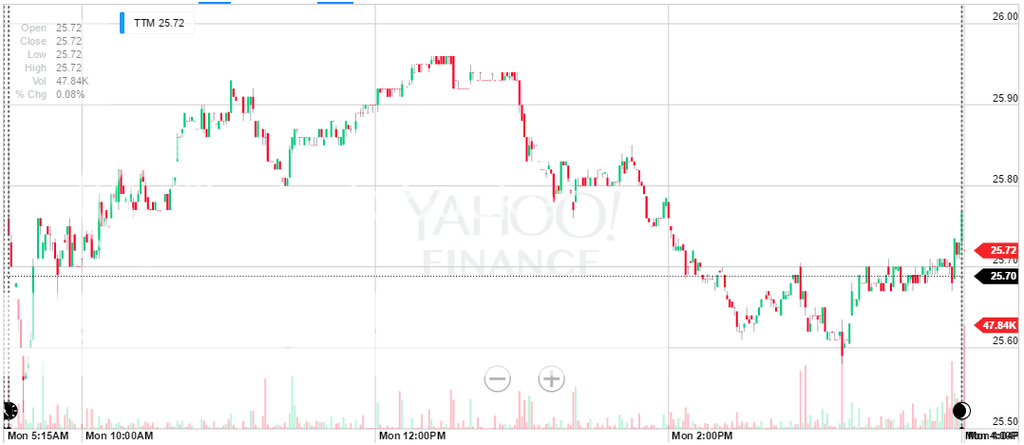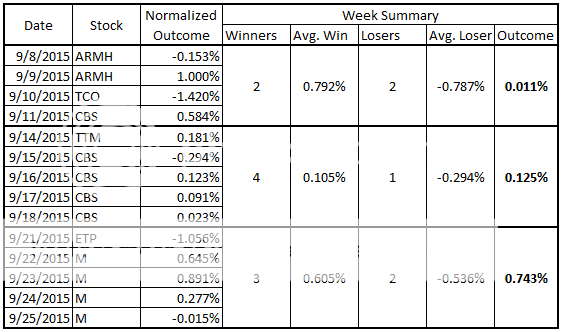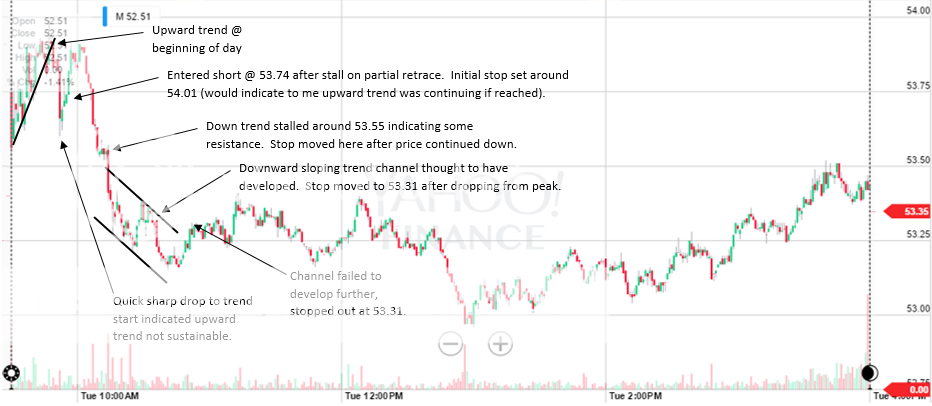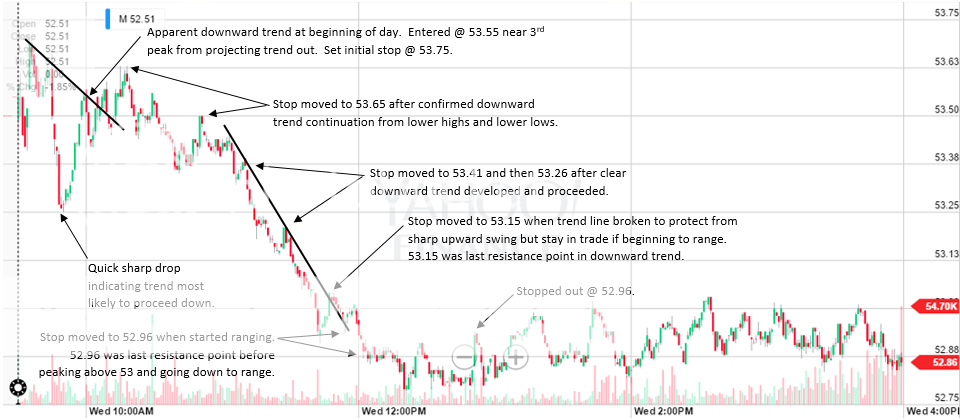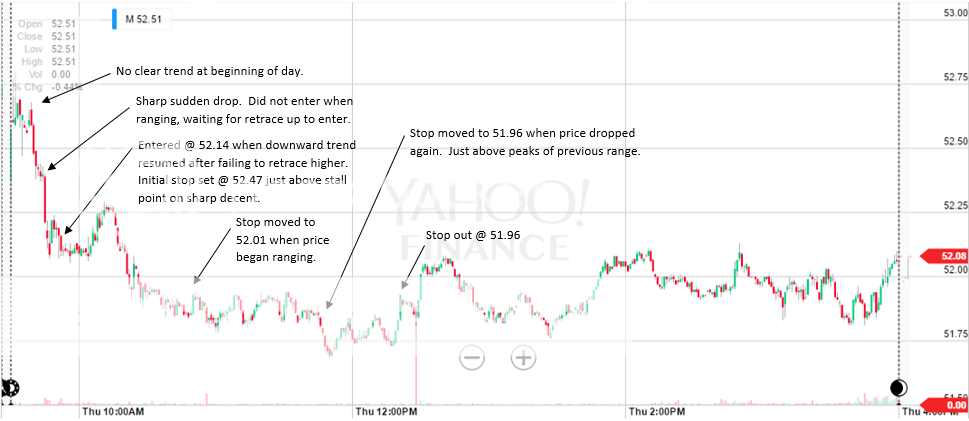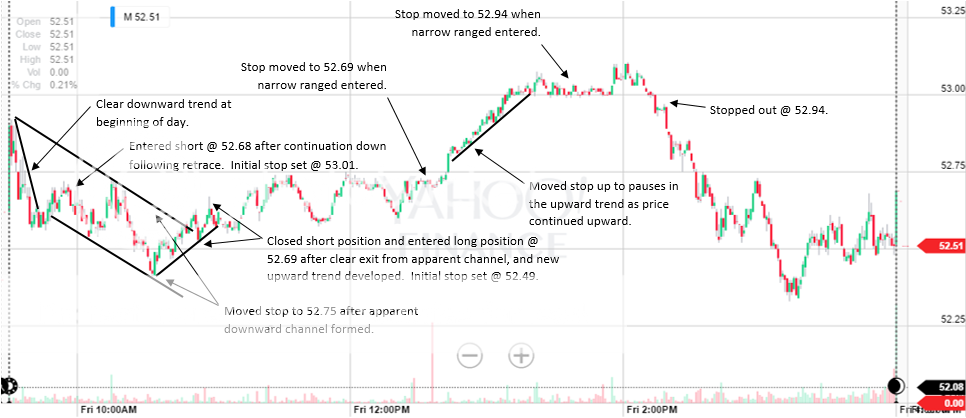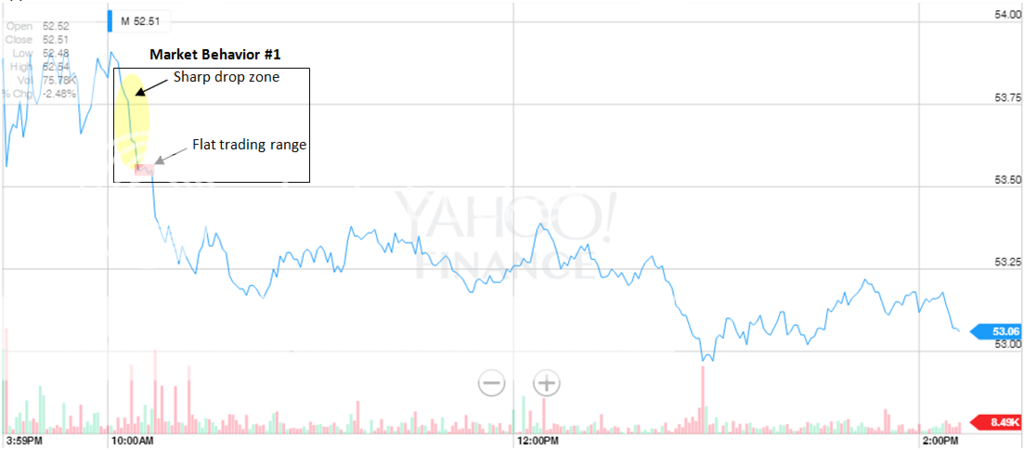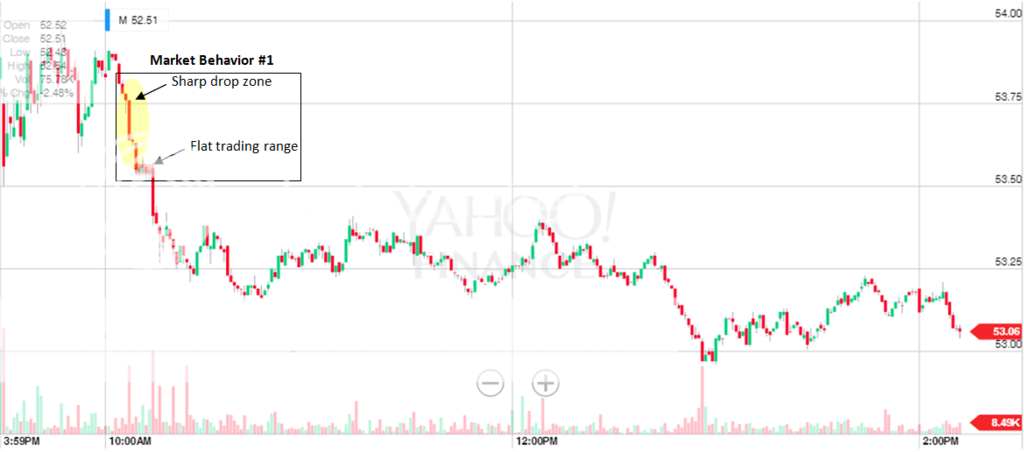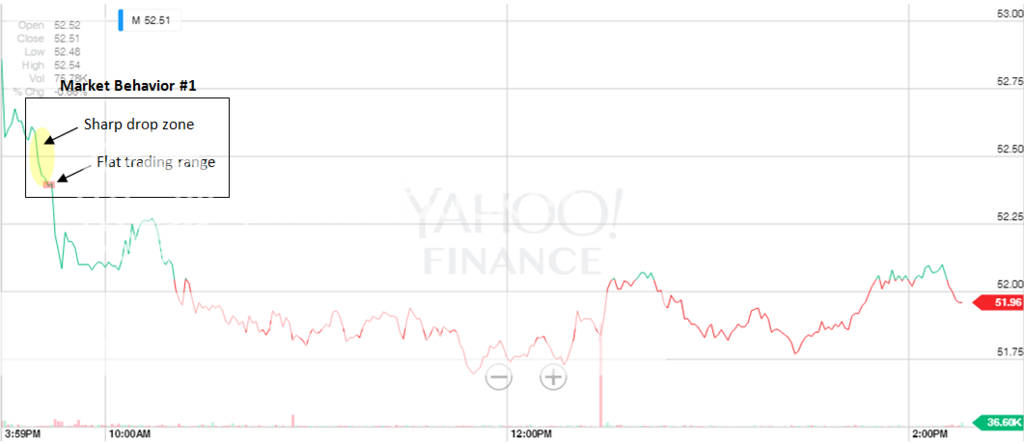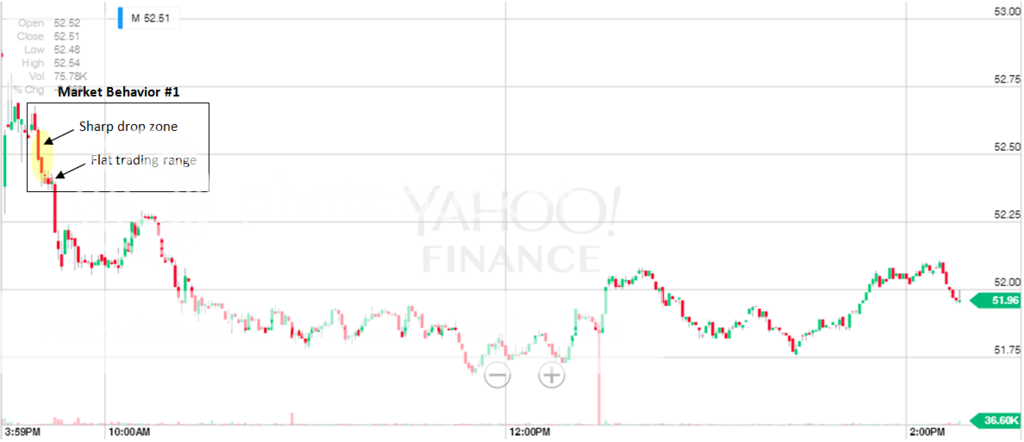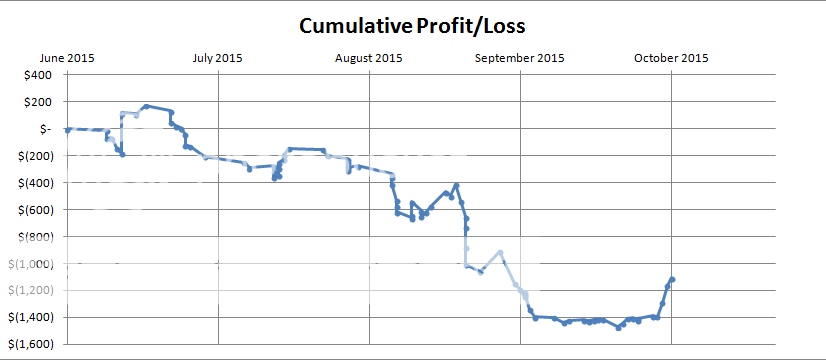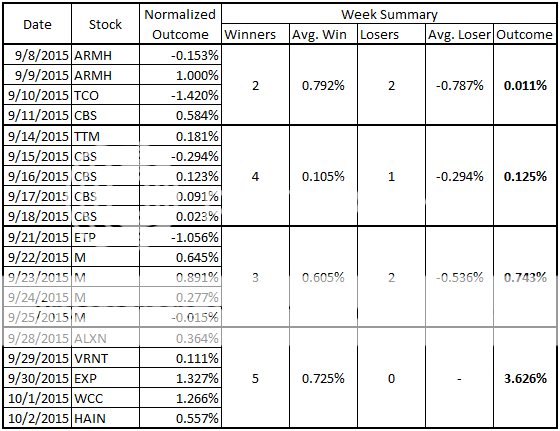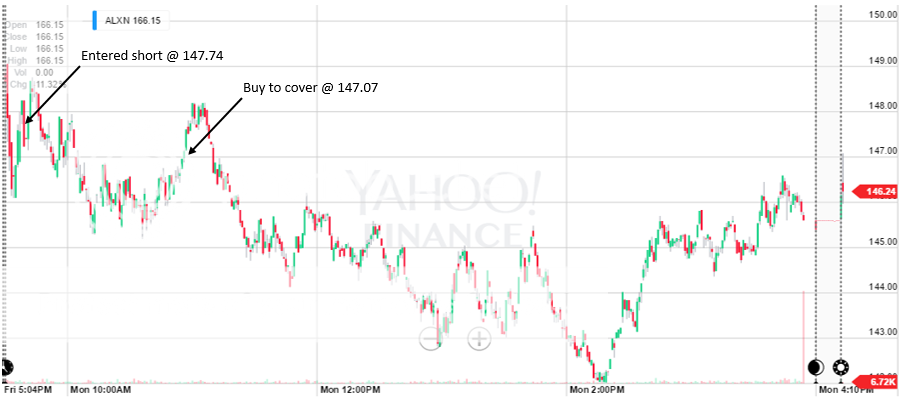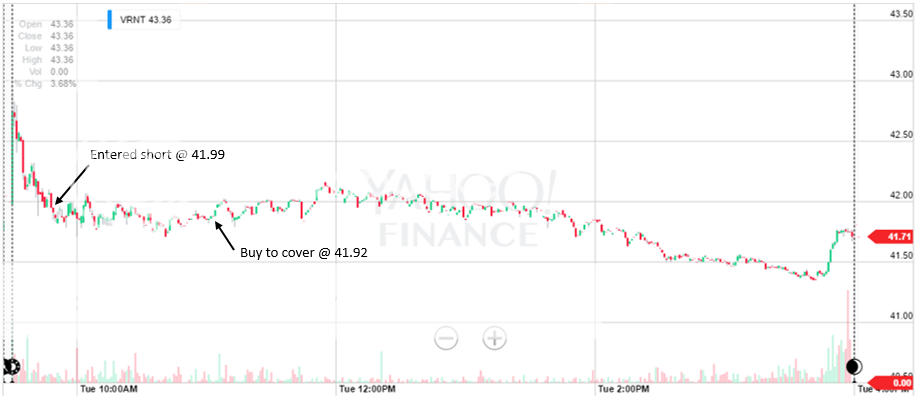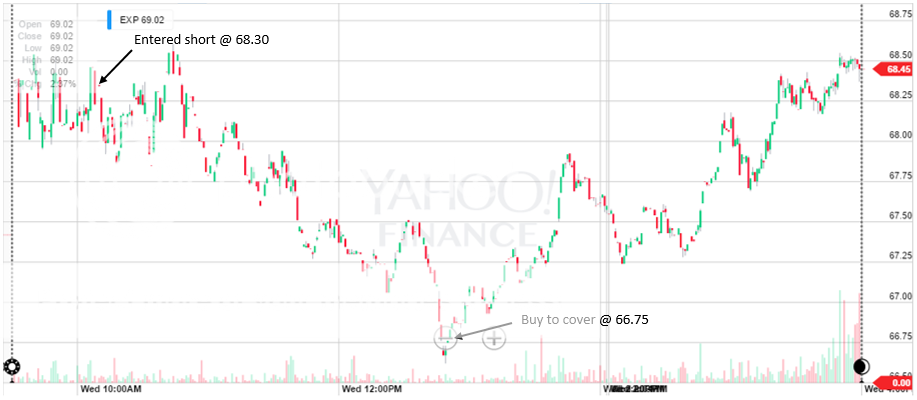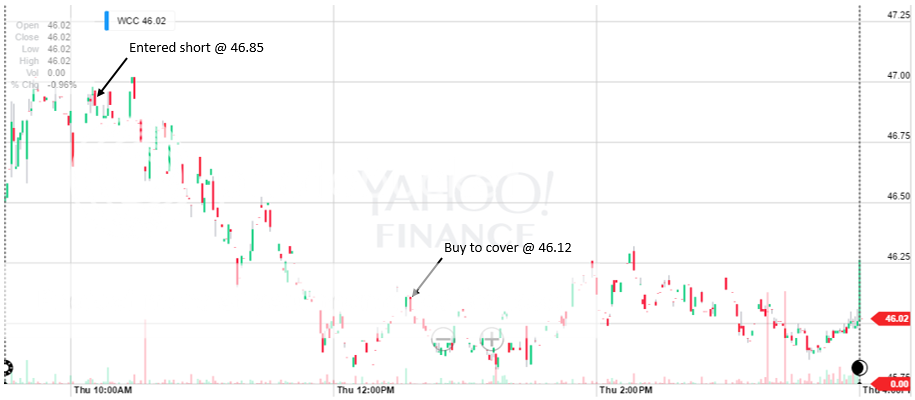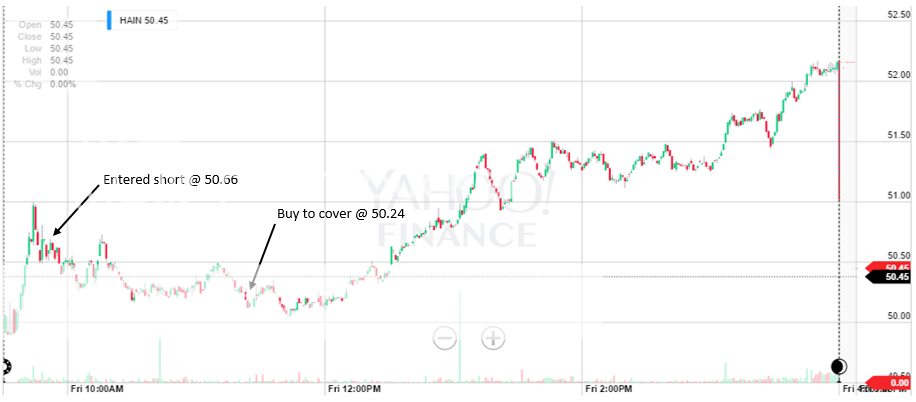TCO is trending down and you're short (or will be at market open) so, in theory at least, probability is on your side and your profit target will be hit before the SL. However, if you look at the volatility of TCO (adding the standard 14 period ATR is as good a way as any that I know of), then you'll see that the stock could easily move almost $1.50 on the day. Current price is around $67.00 and, with a target of 1%, you're aiming for $0.67 per share traded. One thing's for sure, with an ATR at well over two times your stop loss and profit target - the probability of one or other of them being hit during the day is very high indeed. I'd happily bet on that - and heavily. As to which one gets hit first is anyone's guess!
It was not by accident that this was done. If you take a look at the screener results, it is showing that 11 of the 15 previous days the 1% target profit was hit (~$0.70), and 5 of the 15 times the 1.5% (~$1.05) target was hit. Only 2 of the 15 previous days hit 1% up. There were a few days with a substantial downside and one with a large upside which skewed the ATR. So although the average range of the stock is quite large relative to the stops I set, the immediate trend is showing that the range is significantly skewed to the downside. I expect this will be the case of most of the trades in this system and is something I will keep in mind if I need to rework it.
Also, I wouldn't set a profit target - at least not one that's percent based. If you feel the need for a target, I'd suggest looking at something that's TA based and has some logic behind it, rather than an arbitrary number.
I do not disagree with your statement that a hard profit target should not be set. In fact, if I had time to dedicate to screen watching, I would play these by setting a soft target and as the target was approaching look at the trend to make the final decision as to when to exit. Essentially I would let the trend I see continue until it is broken and then exit (provided it is not near the end of the day). This was actually how I tried to play the 1.0 version trades, but I simply can't dedicate the time required to do this while at work. This is why I have the hard targets set.
However, the hard targets I set are not completely arbitrary. The way they are derived comes from the immediate (15 day prior) price trend. This is a system based on momentum so the underlying theory is that the price action will continue to act in a similar fashion in the immediate future (i.e. the following day). It is possible that 15 days is still to large of a window to look at for a short term strategy...or simply possible that there is no edge to be found from looking at it in this way. Time will tell.
Also, while you're at work, if you're able to, take a gander at what the S&P futures are doing half an hour or so before market open. If they're trending up, then cancel your pending short order - especially if you're sticking with the 1% SL and profit targets. If you have pending orders to the long and the short side, then you could use the futures as a guide as to which to leave in place and which to cancel. Just a thought.
Tim.
This is doable and something I will keep an eye on for future trades. Not going to incorporate it quite yet, but I have been thinking along these lines as well. I am also considering doing one short and one long play each day to hedge my risk somewhat in the event of a major good (or bad) news event that impacts all stocks. Some things to consider going forward, but not going to act on them yet.
Today was a loss for the system:
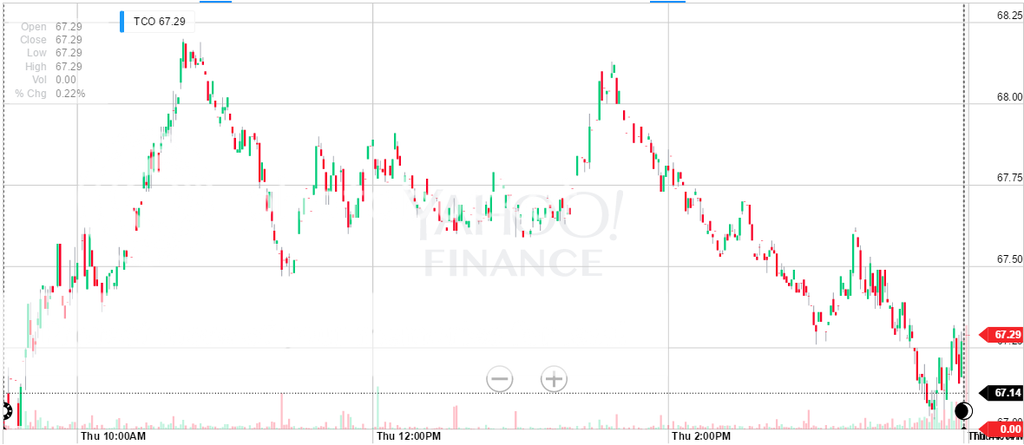
I forgot to set my alerts after open so got screwed a bit more than I should have with the trade. A mistake that is good to make while my risk is still small...won't do that again, but it is clear that luck does not favor me.
Trade 3 summary:
Date 9/10/15
Stock: TCO
Outcome: -1.42% (-1.42% normalized)
"could have been" outcome: -1.42% (-1.42% normalized)
I have also realized that unless I normalize my results, they won't tell me much, so I will normalize all trades planned risk to 1%.
This changes the previous trades to:
Trade 1:
normalized outcome (both cases): -0.153%
Trade 2:
normalized outcome (actual): + 1.00%
normalized outcome (could have been): + 0.667%
TCO still looks like a good one, but I have been watching CBS for a while now and like it more since the trend is better defined. So, tomorrow my play will be CBS. ARHM is still hovering around the trend I drew...slightly above it now I think.
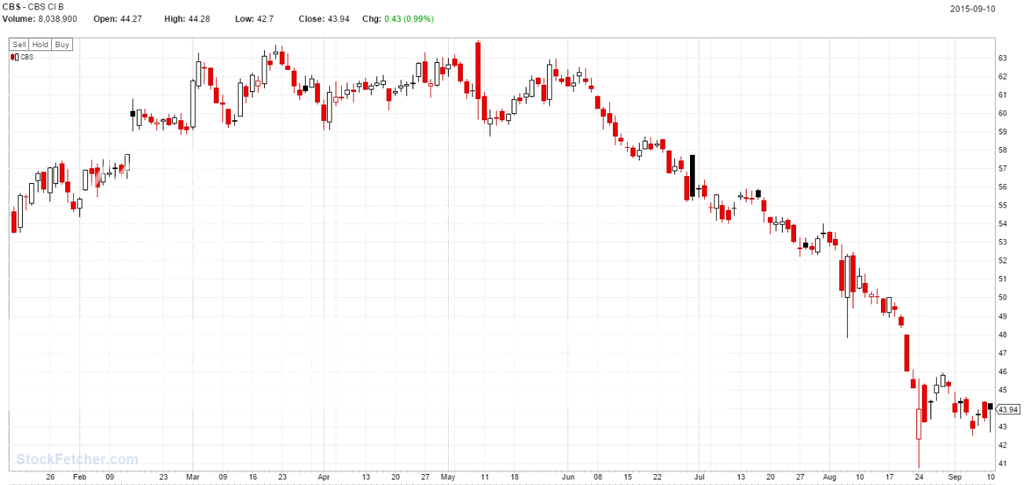
The stock has been trading sideways (but nearly always a down day) for a little bit now, but it is approaching the main down trend again. The trend of the sector is down as well.
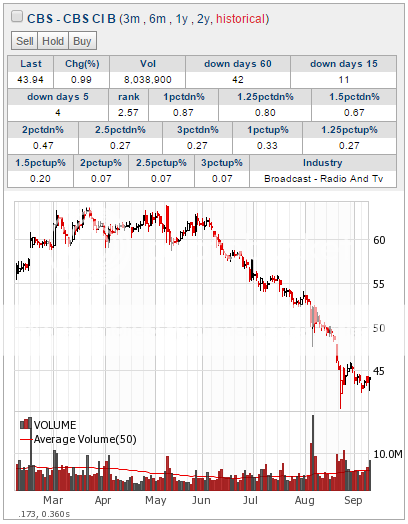
Target profit and stop will be set at 2%. 42 of the 60 previous days have been down open to close, and the recent trend for Fridays is down so I am liking the odds.
Last edited:

